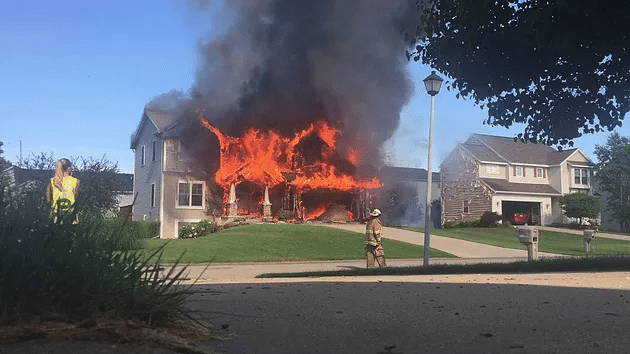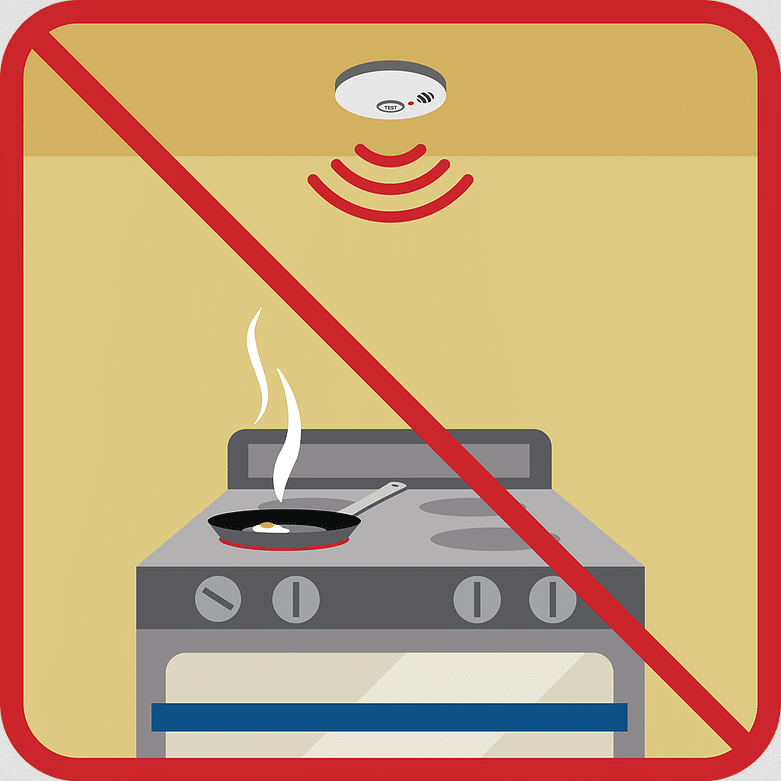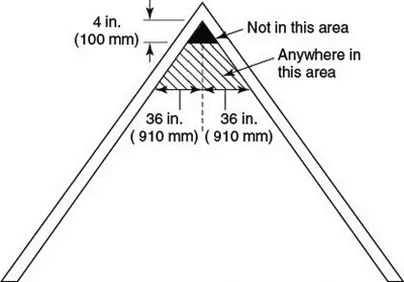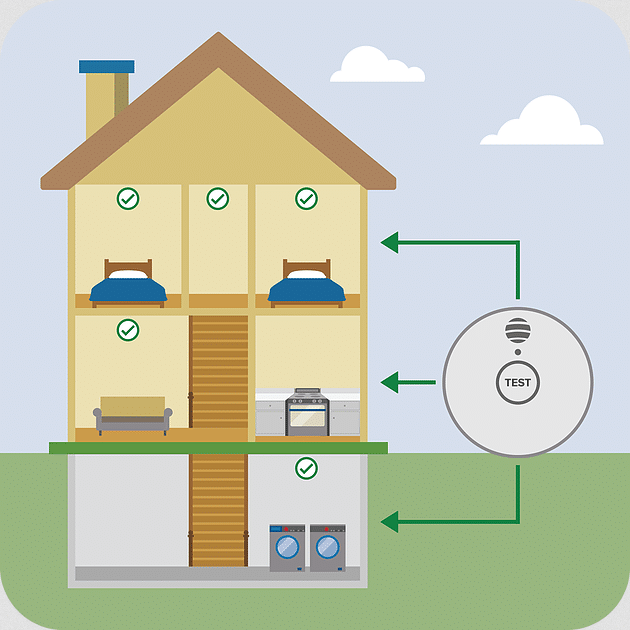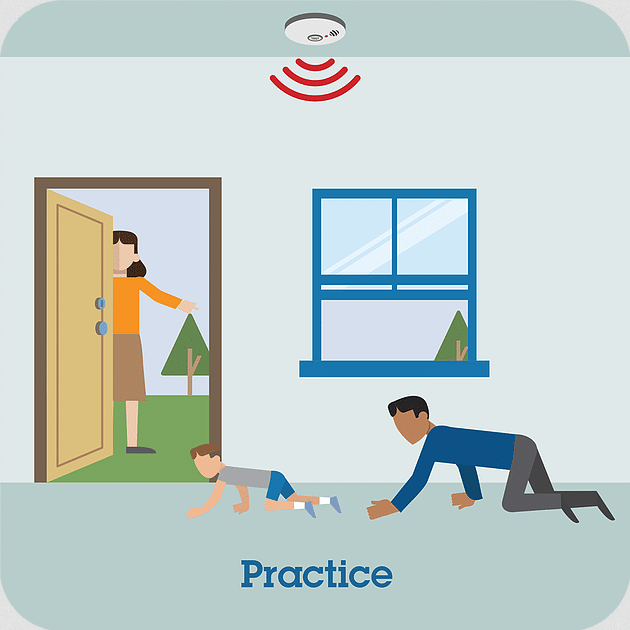We all remember Smoky the Bear from our childhood saying “Only you can prevent forest fires.” Well, that sentiment carries over to the household as well. Home fire safety is a crucial issue for everyone. Reports about home fires are on the news all the time, and, unfortunately, we continue to have significant damage to properties and tragic loss of life when home fires occur. As homeowners, it is our responsibility to ensure the safety of our homes. This can be accomplished several ways via smoke detectors, fire suppression devices, proper maintenance of the house.
Fatal Facts
- Half of home fire deaths result from fires reported between 11 p.m. and 7 a.m. Only one in five home fires were reported during these hours.
- 43% of home fires start in the kitchen.
- One fourth of home fire deaths were caused by fires that started in the bedroom. Another fourth resulted from fires in the living room, family room or den.
- Three out of five home fire deaths happen from fires in homes with no smoke alarms or no working smoke alarms.
- In 2015, U.S. fire departments responded to an estimated 365,500 home structure fires. These fires caused 2,560 deaths, 11,075 civilian injuries, and $7 billion in direct damage.
- On average, seven people die in U.S. home fires per day.
- Cooking equipment is the leading cause of home fire injuries, followed by heating equipment.
- Smoking materials are the leading cause of home fire deaths.
- Most fatal fires kill one or two people.
- During 2010–2014, roughly, one of every 338 households reported a home fire per year.
Smoke/Carbon Detectors
- Choose smoke alarms that have the label of a recognized testing laboratory.
- Install smoke alarms inside each bedroom, outside each sleeping area, and on every level of the home, including the basement.
- On levels without bedrooms, install alarms in the living room (or den or family room) or near the stairway to the upper level, or in both locations.
- Smoke alarms installed in the basement should be installed on the ceiling at the bottom of the stairs leading to the next level.
- Smoke alarms should be installed at least 10 feet (3 meters) from a cooking appliance to minimize false alarms when cooking.
- Mount smoke alarms high on walls or ceilings (remember, smoke rises). Wall-mounted alarms should be installed not more than 12 inches away from the ceiling (to the top of the alarm).
- Don’t install smoke alarms near windows, doors, or ducts where drafts might interfere with their operation.
- Never paint smoke alarms. Paint, stickers, or other decorations could keep the alarms from working.
- For the best protection, interconnect all smoke alarms. When one smoke alarm sounds they should all sound. Interconnection can be done using hard-wiring or wireless technology. v
- When interconnected smoke alarms are installed, it is important that all of the alarms are from the same manufacturer. If the alarms are not compatible, they may not sound.
- There are two types of smoke alarms – ionization and photoelectric. An ionization smoke alarm is generally more responsive to flaming fires, and a photoelectric smoke alarm is generally more responsive to smoldering fires. For the best protection, both types of alarms or combination ionization-photoelectric alarms, also known as dual sensor smoke alarms, are recommended.
- Keep manufacturer’s instructions for reference.
- Test smoke detectors once a month and replace every 10 years. (smoke detectors do not last forever)
If you have ceilings that are pitched, install the alarm within 3 feet of the peak but not within the apex of the peak (four inches down from the peak).
Figure A.29.8.3.1 from NFPA 72, National Fire Alarm and Signaling Code (2013 edition).
Escape Plans
When an emergency occurs, escape plans play a vital role in getting family members to safety; however, many deaths, including children, occur because an escape plan was not developed.
- Pull together everyone in your household and make a plan. Walk through your home and inspect all possible exits and escape routes. Households with children should consider drawing a floor plan of your home, marking two ways out of each room, including windows and doors. Also, mark the location of each smoke alarm. For easy planning, download NFPA’s escape planning grid (PDF). This is a great way to get children involved in fire safety in a non-threatening way.
- A closed door may slow the spread of smoke, heat and fire. Install smoke alarms in every sleeping room, outside each sleeping area and on every level of the home. NFPA 72, National Fire Alarm Code® requires interconnected smoke alarms throughout the home. When one sounds, they all sound.
- Everyone in the household must understand the escape plan. When you walk through your plan, check to make sure the escape routes are clear and doors and windows can be opened easily.
- Choose an outside meeting place (i.e. neighbor’s house, a light post, mailbox, or stop sign) a safe distance in front of your home where everyone can meet after they’ve escaped. Make sure to mark the location of the meeting place on your escape plan.
- Make sure your homes’ street number is clearly visible from the road. If not, paint it on the curb or install house numbers to ensure that responding emergency personnel can find your home.
- Have everyone memorize the emergency phone number of the fire department. That way any member of the household can call from a neighbor’s home or a cellular phone once safely outside.
- Make sure someone is assigned to assist infants, older adults, or family members with mobility limitations. Conduct fire drills to make sure each person understands their responsibility in the vent of a real fire. Assign a backup person too, in case the designee is not home during the emergency.
- If windows or doors in your home have security bars, make sure that the bars have emergency release devices inside so that they can be opened immediately in an emergency. Emergency release devices won’t compromise your security – but they will increase your chances of safely escaping a home fire.
- Tell guests or visitors to your home about your family’s fire escape plan. When staying overnight at other people’s homes, ask about their escape plan. If they don’t have a plan in place, offer to help them make one. This is especially important when children are permitted to attend “sleepovers” at friends’ homes. See NFPA’s “Sleepover fire safety for kids” fact sheet.
- Be fully prepared for a real fire: when a smoke alarm sounds, get out immediately. Residents of high-rise and apartment buildings may be safer “defending in place.”
- Once you’re out, stay out! Under no circumstances should you ever go back into a burning building. If someone is missing, inform the fire department dispatcher when you call. Firefighters have the skills and equipment to perform rescues.
We only touched on a few aspects of residential fire safety for more information please check out https://www.nfpa.org/ where most of the statistics and images came for this article.
Remember that your family’s life may be dependent on a few inexpensive batteries replaced annually and a well-designed escaped plan.



